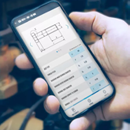NuScale Power Incorporates Boltight® Tensioning System in Unique Automated Tooling for Small Modular Reactors
Nuclear power is a highly effective method of generating large volumes of energy. On the other hand, conventional plants are complex to maintain and refuel, not least when considering radiation. Fortunately, a more modern, efficient way of nuclear power generation has emerged – Small Modular Reactors (SMR). How does Boltight address the maintenance challenges of this emerging industry?
SMRs adopt a design of multiple smaller reactors instead of a single larger one; a setup that translates into more efficient use of resources while also significantly streamlining maintenance and refueling. But regardless of type or design, working on nuclear plants entails highly complex operations that occasionally run into costly outages and also put operators at risk.
So, when the leading manufacturer of SMRs, NuScale Power, sought to minimize critical outages by coming up with a better, future-proof method of automated maintenance, Boltight solutions from Nord-Lock Group came to play an integral role.
"It was almost twenty years ago that NuScale developed a vision for a new type of nuclear reactor, a small module reactor. We made history in 2020 as the first small modular reactor to receive US nuclear regulatory commission design approval."
Dr José Reyes, Chief Technology Officer & Co-founder at NuScale Power.
The Best Tensioner for the Job? Boltight
The main reason why NuScale Power wanted to automate their maintenance process was to optimize the most critical part of operating a nuclear plant – refueling. Previously, with the reactor pressure vessel located 60 feet underwater, it was tricky to access and perform necessary tightening and untightening during the fueling process on the inverted nut head.
“Traditionally, you had a team of three or four guys using hydraulic tools connected to a polar crane, moving the tensioners around the head. Not only does that approach tend to be complicated and time-consuming, but also involve direct human interface, which is not optimal considering the radiative environment,” says Patrick Abernethy, consultant at Nord-Lock Group BU Tensioning who worked extensively with NuScale Power to develop the new automated tool.
Following a bidding process, where the Boltight team put together a proposal highlighting how the industry-leading capabilities of their hydraulic tensioning solutions would accommodate the technical scope of the project, NuScale Power became convinced that Boltight was the ideal tensioning solution for the automation tool.
“After NuScale approved of and opted for Boltight, we worked through a series of acceptance criteria tests to prove the reliability of our tensioner. Given how our tensioning systems performed throughout the entire process, it sure was a big success,” says Patrick Abernethy.
Hydraulic Tensioning Meets Automation
After having chosen Boltight for the initial development stage, another player needed to be brought in to finalize the automated robotics parts of the tool. Following a separate bidding process, ATS Industrial Automation (ATS) was awarded with the contract to bring the expertise and solutions that ultimately would lead to the realization of the automated toolset called Modular Assembly Equipment Tooling (MAEB).
“ATS was a great partner, and once we sorted out where our responsibilities lay, our collaboration ended up working beautifully” says Patrick Abernethy.
The MAEB tool still has to be operated manually, meaning it is not fully automated. The operator navigates the water inside the reactor pressure vessel with a camera. Still, this represents a giant leap in terms of simplicity and efficiency when refueling and doing maintenance on the SMRs.
Developed to Tackle Real-World Challenges
To have the hydraulic tensioning tool fit and work together with the ATS automation prototype, the Boltight engineering team had to address real-world aspects of the operating conditions. This related, for example, to potential contingencies if the tensioner was not able to engage due to misalignment. To account for that, the tensioner needed to be able to have some degree of tolerance. Another scenario that the team addressed was one where the tensioner for some reason got stuck, and how the design and functionality of the tensioner would account for this the best.
Considerations like these illustrate how developing the automated maintenance tool for nuclear reactors, one that has virtually no predecessor, required a pragmatic, innovative engineering approach.
Patrick Abernethy concludes: “We basically started from a piece of paper to come up with how a tensioner in this environment would work. The engineering feat when it comes to this tool and the tensioning solution turned out to be quite outstanding. I’m excited for what’s to come next”.


